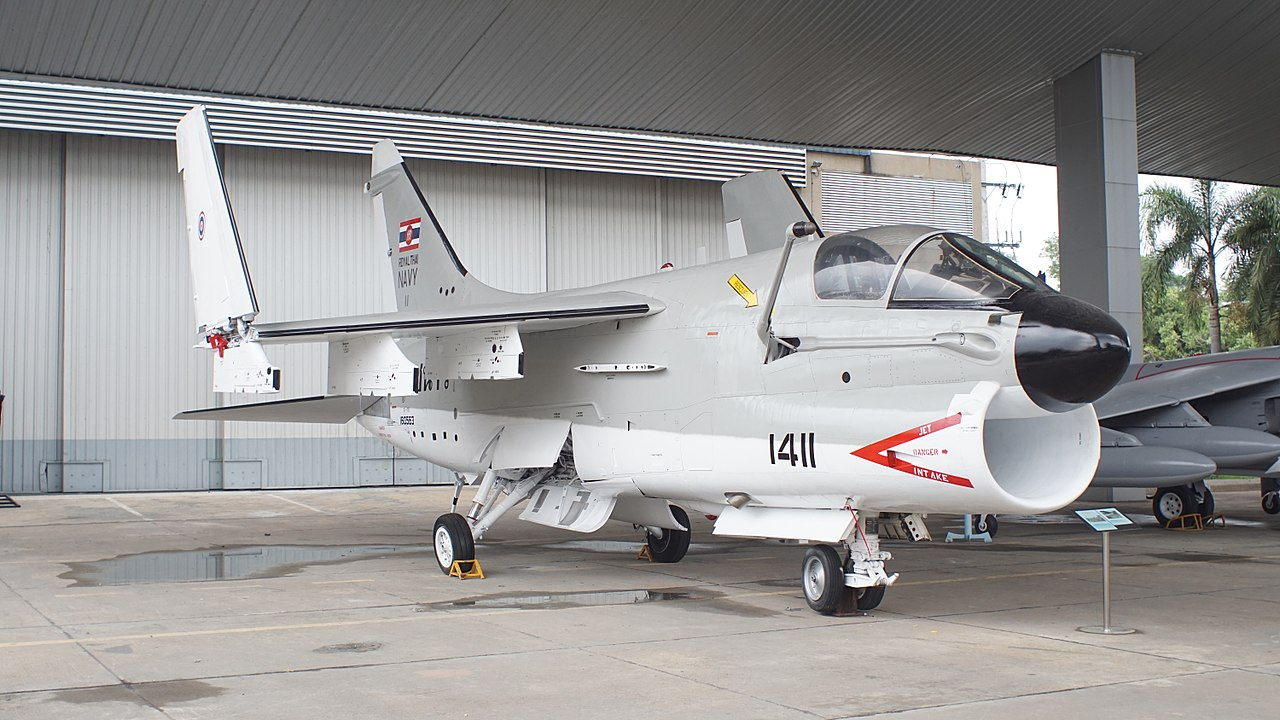
In military aviation, there is the Vought A-7 Corsair II, a paradoxical aircraft. It wasn’t streamlined. It wasn’t lightning-quick. And it wasn’t a jet that would become legendary. However, this “Short Little Ugly Fella” nickname, affectionately bestowed by those who operated it, turned out to be one of America’s most respected and reliable strike aircraft ever. And how did a humble, low-cost, subsonic aircraft become the star of the show in an era obsessed with supersonic capability and high-tech design?

The history of the A-7 begins in the early 1960s, during the Cold War’s intense technological competition. As military commanders pursued faster and more advanced planes to counter the Soviets, the Vietnam War called for something else. The U.S. Navy required an attack aircraft it could count on—one that was heavy-laden had long range, could withstand a pounding from ground fire, and wasn’t prohibitively expensive.
That resulted in a surprise Request for Proposals in 1963. Rather than a revolutionary, supersonic wonder, the Navy requested a subsonic attack aircraft, using a proven design, with twice the payload and range of the A-4 Skyhawk but much reduced complexity. It was a refreshingly practical approach—recognition that actual combat situations more often prize survivability and firepower over speed and flash.

Enter Vought. Taking lessons learned from its popular F-8 Crusader, they redesigned the airframe: shortening ten feet from its length, eliminating the variable-incidence wing, and replacing it with a fuel-thrifty, non-afterburning turbofan engine. The outcome was the A-7 Corsair II—simpler, stronger, and cheaper. It first flew in September 1965 and was operational within an astonishingly short time.

The entire A-7 design was function-based rather than form-based. It wasn’t designed to pursue MiGs at supersonic speeds. Rather, it was specifically designed for low-level strike missions where efficiency, reliability, and payload potential were key. Because of its engine, the A-7 had a range of over 1,200 miles without the need for refueling—a huge advantage over its peers. And it could carry up to 15,000 pounds of ordnance—almost twice that of the A-4 it replaced.

But the Corsair II was no flying dump truck for bombs. It was an avionics pioneer. It was the first US combat fighter to have a heads-up display (HUD), which cast flight and target information straight into the pilot’s line of sight. Combined with advanced navigation and weapons delivery systems, it made precision strikes more precise than ever. The A-7 was capable of delivering both conventional and guided munitions—among them, the AGM-62 Walleye, one of the very first TV-guided bombs ever.

It was also a durable bird. The A-7’s armored cockpit, double-control systems, and heavy-duty construction made it a formidable opponent. Pilots learned that they could rely on it to get them home.

In Vietnam, that faith proved well-rewarded. Navy and Marine A-7s accounted for more than 97,000 combat missions, with just 54 planes lost. The Air Force’s A-7D model, with a higher-powered engine and improved electronics, made nearly 13,000 sorties with only six losses—the finest survival rate of any American attack aircraft in the war. Whether flown in daylight or darkness, rain or fair weather, the A-7 got the job done with accuracy and reliability.

Its service did not stop at Vietnam. The A-7 continued in a series of American military conflicts, including in Lebanon, Grenada, Libya, Panama, and the Gulf War. The Air Force’s A-7Ds were fitted with M61 Vulcan cannons and more modern armaments such as the AGM-65 Maverick missile, updating the aircraft to the mid-1980s.

Indeed, Vought even took the design one step further with the YA-7F prototype, with its powerful F-16 engine and advanced avionics for supersonic capabilities. Though promising, the project was put on hold in preference for newer multi-role aircraft such as the F-16—a break from how the military thought about buying planes after the Cold War.

By the early ’90s, the A-7 was phased out in favor of more advanced jets like the F-16 and the A-10. Still, its legacy endures. The Corsair II proved that combat effectiveness isn’t always about speed or glamour. It was a flying testament to practicality—reliable, lethal, and efficient.

In a world full of high-tech glitz, the A-7 was a stark reminder that, occasionally, the best weapon is the one that only works—period.
More related images you may be interested in:



